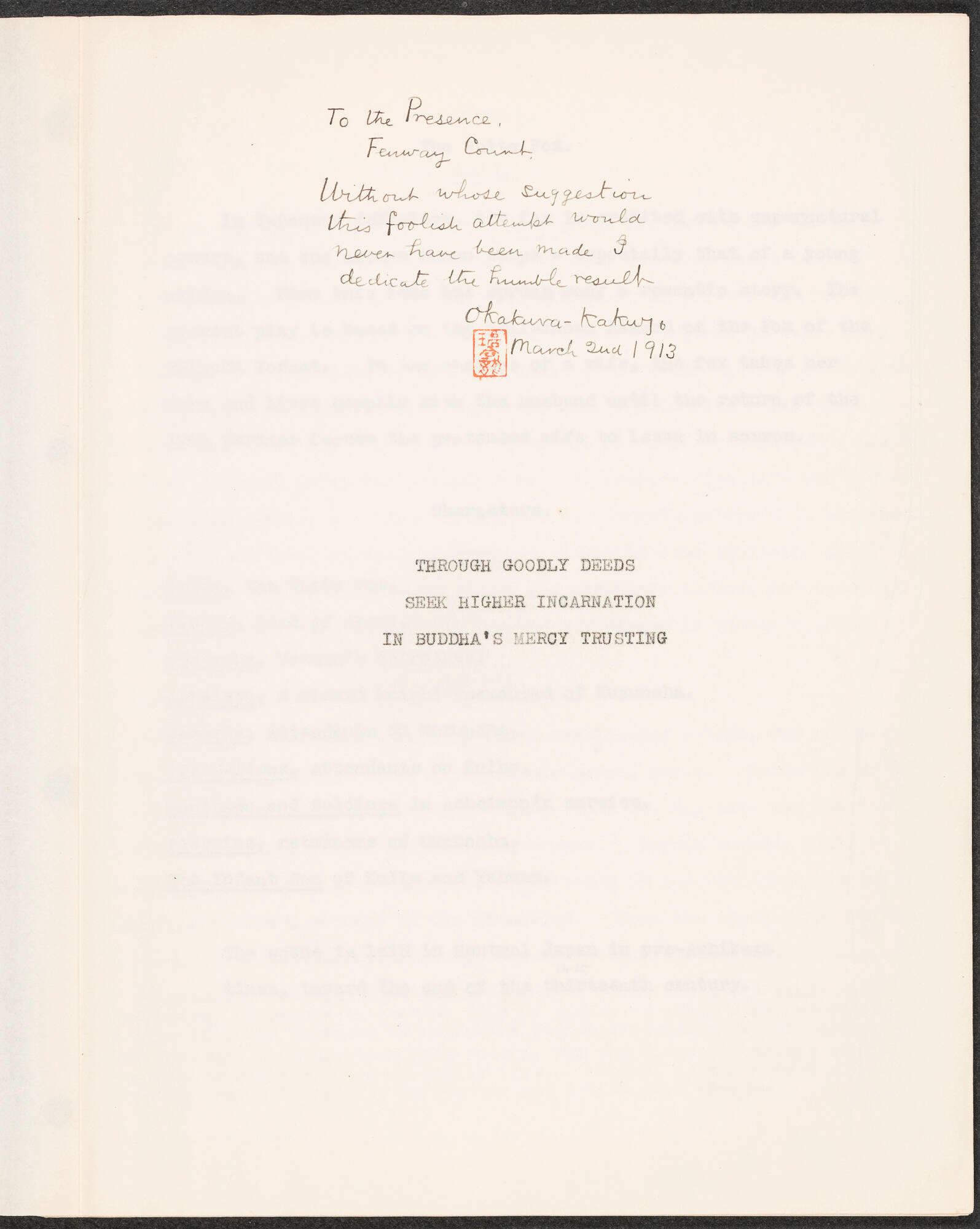In 1914, Okakura’s brother Yoshisaburo wrote to Gardner asking for permission to accede to Okakura’s family’s desire to see the play translated into French. In 1916, the Welshman Bryceson Treharne (1879–1948) wrote to Gardner for permission to write the opera. Matthew Prichard (1865–1936), a curator and friend of Gardner and Okakura, had suggested to Treharne during their mutual internment in Ruhleben prison camp that he set it. Obliquely decrying in his letter the turbulence and noise of modern music, he promised to set it in a simple musical style. In the same year, the playwright and translator Henry Furst (1893–1967) wrote to Gardner, informing her that it would be best to allow the darling of the London theater scene Gordon Craig (1872–1966) stage it as a play in the UK to prevent the French from garnering the glory, since there had been a renegade attempt to produce the work at the Paris Opera. Yoshisaburo wrote again in 1917, informing Gardner that the polymath and Nobel laureate Rabindranath Tagore (1861–1941) wished to have the libretto published. Three years after that, the Count Bérenger de Miramon wrote Gardner, stating that Prichard had made him aware of the libretto before the war, and, appealing to Franco-American solidarity, requested total French rights to the work to translate and assign it to a suitable composer.










